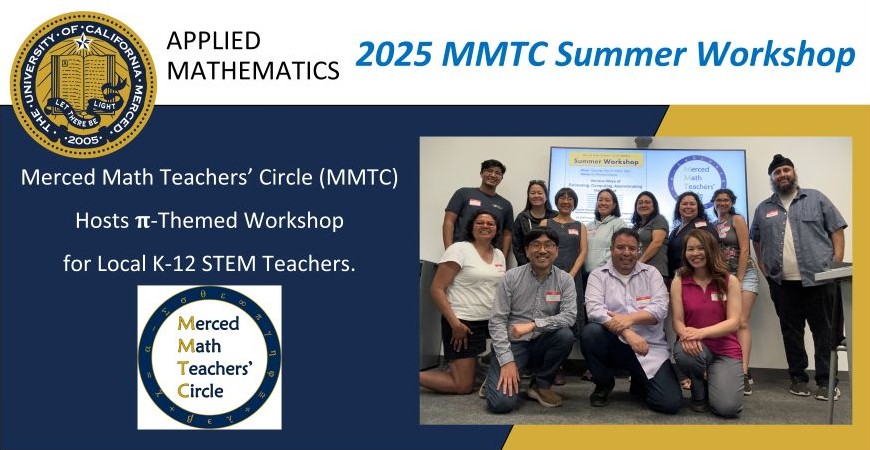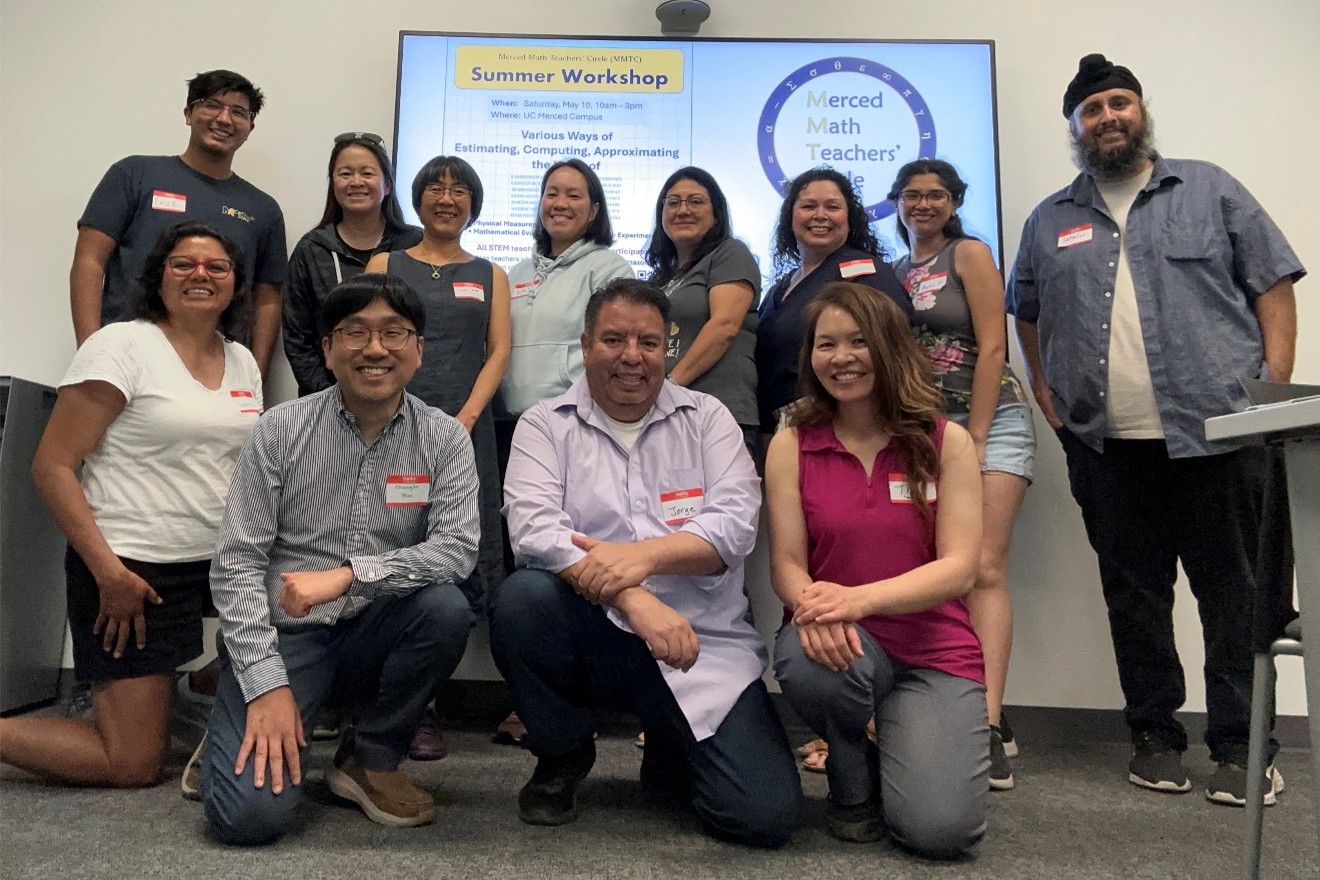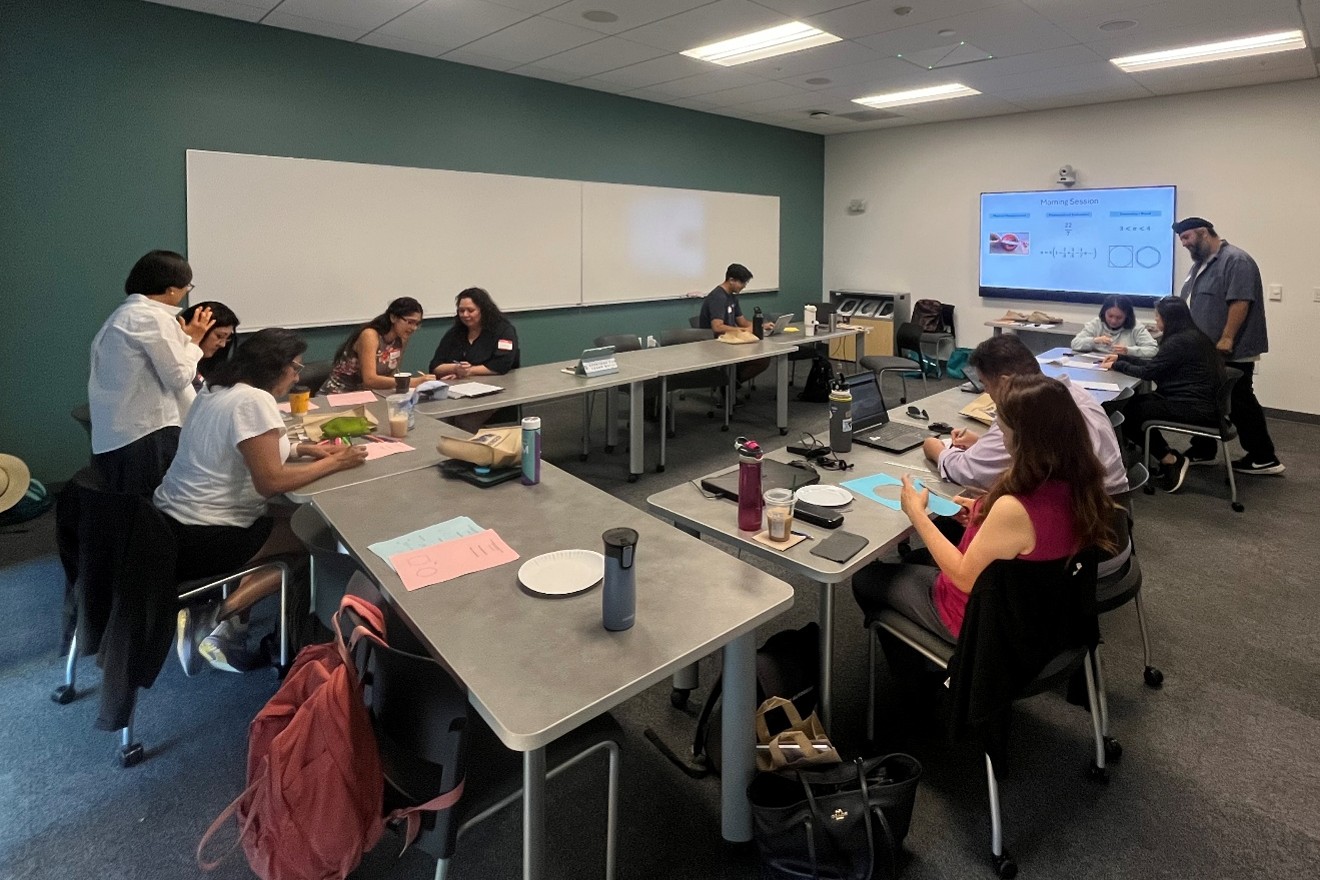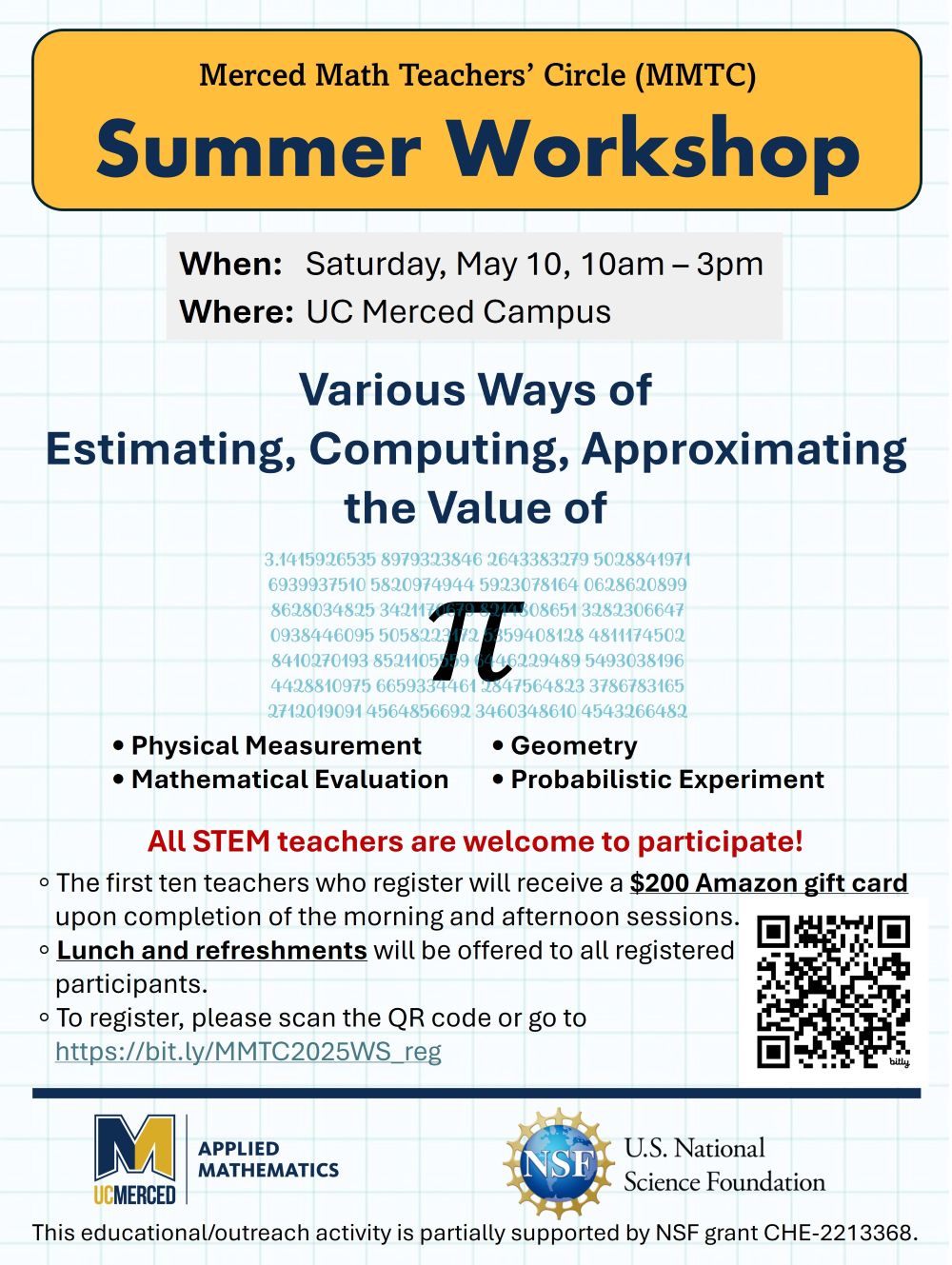
The Merced Math Teachers’ Circle (MMTC) hosted a summer workshop on “Various Ways of Estimating, Computing, Approximating the Value of π.” The event welcomed local STEM educators from across Merced County to explore both deterministic and probabilistic approaches to calculating π (i.e., pi, which is the ratio of a circle's circumference to its diameter) through hands-on and guided activities.
The day began with a welcome session and an introduction to the events of the day. Some participants were existing math circle members and others were new to the math circle. The history of the math circle and its activities were described to get everybody on the same page. Then, the morning focused on deterministic methods for approximating π, including physical measurements, geometric reasoning, and series approximations. There were 3 stations guided by Prof. Changho Kim, Prof. Lei, Yue, and Graduate Student Satinderpreet Singh. Participants rotated through each station in small groups.
At the physical measurement station, participants first discussed the basic formulas related to circles (i.e., circumference and area), after which they developed their own ways to calculate the value of π by using materials like circular household objects, string, tape, scissors, protractors and graph paper. Some traced circles using plates and estimated π by counting grid squares inside the circle’s boundary versus ones inside and touching the boundary, which naturally led to some upper and lower bounds of π. Others cut out circles, then cut the circles into small pie shaped pieces and rearranged them into approximate rectangles to estimate π by measuring the base and height. One group used string to measure the circumference of various objects comparing that to their diameter and achieving surprisingly accurate results. At the geometric reasoning station, worksheets were used, which helped participants develop their own mathematical proofs. The first activity was to argue that π is greater than 3 but smaller than 4 by using the regular hexagon inscribed in a circle and a square circumscribed by a circle. Then, an interesting integral of a polynomial function was introduced to show that π is smaller than 22/7. Many participants were surprised that they could easily prove these mathematical facts. At the series approximation station, participants used their laptops and tablets to accurately estimate the value of π up to certain digits. They were given a few series expansions giving the value of π and created a spreadsheet to compute the value of each term in the series and to add them up.
After a lunch break, the afternoon session focused on probabilistic methods of finding π. One activity involved throwing darts onto a square target with an inscribed circle. Participants aimed roughly in the direction of the square to mimic randomness, then calculated the ratio of darts landing inside the circle to those landing inside the square leading to an estimate of π/4.
The second activity was a version of the classic Buffon’s Needle problem. Participants drew parallel lines on paper, spaced equally to the length of a toothpick, and then individually dropped toothpicks randomly onto the surface. The ratio of total drops to those crossing lines would help approximate π. The day concluded with computer simulations of both probabilistic approaches: one simulating raindrops on a square target, the other modeling Buffon’s Needle.
Throughout the workshop, educators engaged enthusiastically with the material and each other. Many expressed how refreshing it was to work through math problems collaboratively and playfully. As educators, they appreciated that the event provided new ways to inspire their own activities in their classrooms as well. The goal of the MMTC program was to equip educators with engaging and inquiry-driven activities that deepen students’ conceptual understanding, and this event was a successful and lively step in that direction!
Author: Satinderpreet Singh
▪ This event was sponsored by NSF Award No. 2213368 (PI: Changho Kim) and UC Merced’s Academic Senate Faculty Research Grant (PIs: Changho Kim and Lei Yue).
▪ MMTC connects K-12 mathematics teachers, college and university mathematics professors, and all mathematics educators in the Central Valley area of California centered around Merced, whose students are traditionally underrepresented in STEM. Through regular meetings with fun, creative, and meaningful math problem-solving activities, the participants share and (re-)experience the excitement of doing mathematics so that they may bring that enthusiasm into their own classrooms. MMTC was initiated by Prof. Lei, Yue in 2018 and has been co-hosted by Prof. Changho Kim since 2019. Currently, the circle meets 2-3 times per semester.




